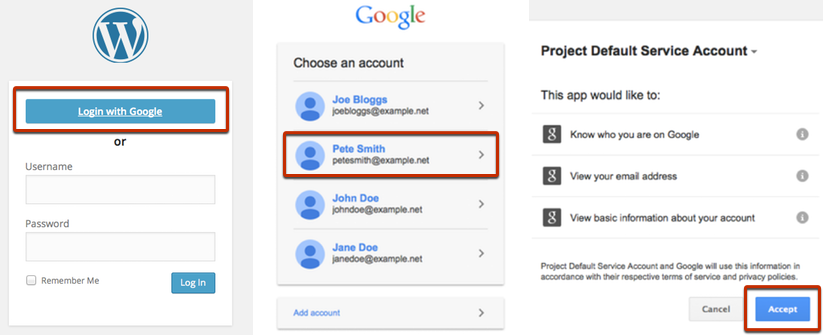You are here questioning Intranet vs. Extranet. What exactly is the difference?
Maybe you’ve just heard the terms “intranet” and “extranet” and want to know more about them. Or you’re an IT tech who’s asked about extranets and intranets daily and would like a learning resource to point interested people to.
In either case, we’re here to help explain the difference between intranet and extranet, differentiate what they’re used for, and even offer some strategies for safely setting up and maintaining your external networks.
Before we go into all that, let’s understand a little more about the internet.
What Exactly Is the Internet?
It’s on our computers, phones, refrigerators, and even in some of our medical devices. You’re reading this article on the internet right now! The internet is a global web of interconnected servers, personal computers, and devices that is (relatively) accessible to anyone.
However, many people don’t run into intranets or extranets in their daily lives. Or, if they do, they may not realize they’re using them. If you understand how the internet works, figuring out extranet and intranet functions shouldn’t be difficult.
What Is an Intranet?
An intranet is fundamentally similar to the internet: it’s a connected network of computers. You can share data, messages, and files across multiple platforms on the intranet.
The primary purpose of an intranet is for employees and coworkers to communicate quickly and safely. However, the intranet is more secure, exclusive, and local. Only a select group of people inside a business or organization can access an intranet network. Files on the intranet can be accessed and altered by relevant personnel in the company. This creates a solid platform for collaboration between employees while keeping documents off the more extensive internet.
Now, most cloud services these days fulfill many of those collaborative functions. But, the safety of your data stored in a third-party server (like the cloud server) will always come with security risks.
Examples of Intranet Use
Intranets primarily connect coworkers on a restricted network to share resources.
HR Intranet
HR intranets keep all employee documentation on one closed network. Hiring and termination-related paperwork, insurance forms, PTO forms, and other confidential information can be stored safely and accessed easily. HR and employees might have access to this intranet. For example, companies could empower employees to download, fill out, and turn in their PTO and insurance forms without HR.
School Intranet
School intranets can connect students to teachers or teachers with each other. Students can check assignment dates and instructions, school events, and grades. They can also use the network to turn in essays, papers, and classwork. In addition, allowing students access to a school intranet will foster collaboration on projects, which is crucial for remote students taking online courses.
On the other hand, teachers can access the school and district calendars, share teaching resources, turn in reports or attendance sheets, create per-class notebooks and folders, and more.
These schools utilize WPg’s Intranet plugins for WordPress.
Corporate Intranet
Corporate intranets, of course, let coworkers share, access and store files. Work files, images, calendars, videos, spreadsheets, client details, order forms, and budgets are some files shared inside a corporate organization. Storing these on an intranet network allows the company to restrict access to the files based on authority and function.
Organizations can also store corporate knowledge resources such as training material, best practices, dress codes, process walkthroughs on an intranet network. These can be read by new employees and expanded on by senior employees.
Manufacturing Companies
Manufacturing companies need to manage many parts of their supply chain. Sometimes suppliers or vendors are involved at different stages of the manufacturing process. Through an intranet, the process of sharing information and collaborating with partners is simplified.
Real Estate Companies, Accountants, and Law Firms
Such business setups have a high amount of data transfers between clients and businesses. Since this data needs to be stored safely and documented to be assessed regularly, real estate, accountants, and law firms could benefit from secure, closed networks.
How To Set Up an Intranet
First, you need to determine key factors like:
- The functions and purpose of the intranet
- The people who would be using it
- The size of the intranet
- Database and document types featured
- Access to create, publish and manage content on the network
Once you’ve decided on the basics, you can figure out the rest as you set up the intranet. To do so, you have the following three options:
- Install Intranet Software Onto Your Server
Designing an intranet will require you to create a local area network first. This involves connecting all devices in your office or organization.
The next step requires you to install an intranet server software. Popular server applications include Microsoft IIS, Apache Tomcat, and Oracle WebLogic. You can also choose a web developer or outsource the job of creating your intranet. There’s another option that requires you to code web server software. However, it’s outdated and time-consuming.
In this setup method, the server hardware and software are protected by firewall hardware and software, which gate the intranet from the rest of the greater internet.
The main drawback of such a setup is the hassle of managing the intranet server. From the installation and configuration to security and updates, you’re required to handle everything yourself. Of course, you can set up an internal IT team or outsource the task, but that’s still going to cost you a lot of money.
- Use a Cloud-based Hosting Service
Alternatively, you could pay for an online hosting service to host your intranet server. Unlike a company intranet software, a hosting service doesn’t require you to maintain, set up, or update the intranet. Instead, all your company needs to do is pay a subscription fee and gain access to all the features provided by the hosting service.
It is cheaper and more cost-effective in the long run for companies with fewer operations and small workforces. It is also an excellent alternative for companies looking to upgrade their in-office processes to support remote work.
Dropbox, Google Drive, and Microsoft’s OneDrive have become popular for sharing data in an organization. In contrast, messenger services like Skype for Business and Slack have taken over much of the intra-organizational communication duties.

- Build Intranet From Scratch
Building an intranet from scratch is not an option for all companies. It requires a lot of time, usually months, internal IT resources, and a big budget. However, such a setup might be an excellent solution when you’re running a huge organization. It is also ideal when you have specific needs from your internal communications server.
Benefits of the Intranet
- Ease of collaboration
- Increase in employee engagement
- Makes it easier to make announcements or distribute information from the higher-ups to all employees
- Remote access through cloud storage
- Improved accuracy and consistency in accessing and delivering information
- Email integration to distribute information quickly
- Improved quality of work
- Automated administrative processes like sick leaves, vacation time, performance reviews, and appraisals
- Improved internal communication
- Reduced downtime in looking for physically stored files and data
- Quick and efficient content management
- Cost-effective
Drawbacks of the Intranet
- Setting up an intranet network is time-consuming
- They can be too complex and difficult for employees to navigate on their own
- Overload of data
- No way to measure how effective communication within the organization is

What Is an Extranet?
Think of the extranet as a hybrid—it combines an intranet’s closed nature with the outside connections of the internet. Essentially, an extranet connects customers, vendors, partners, and suppliers to a business on a separate, private network.
It uses the same protocols and connectivity as the normal internet but is only accessible to parties doing business with the organization. An extranet is a secure extension of the internal business processes to selected outsiders. Based on their task, role, function, and purpose, outsiders can access only certain parts of the extranet. For example, if a web page is a public park, an extranet would be a private country club.
Examples of Extranet Networks
Health Care Portals
Health care portals allow doctors, patients, and health care providers to share extremely private information safely. Patients can make appointments, access health records, and communicate with their doctors through text messages or video conferencing.
Schools, Colleges and Educational Institutions
Almost all schools, especially colleges, have extranets these days. Teachers can post their syllabi and assignments, which students can access through a private portal. Students can sign up for classes, get their transcripts, and make appointments with counselors from their computers or mobile phones. They can also pay their tuition and parking fees on an extranet network.
Retail Companies
Retail companies often use extranets that their partners and suppliers can connect to. These extranets are usually utilized for ordering inventory, tracking shipping, monitoring logistics, and making other kinds of B2B purchases. Both the hosting company and the partners can call up receipts, manifests, prices, and other data without asking the other party. Franchises often use extranets for similar purposes, with the added benefit of consolidating all training and standard franchise procedures in one place for all franchise locations.
Lastly, extranets are great for remote teams trying to communicate and collaborate on projects.

How To Set Up an Extranet
Extranets aren’t altogether different from intranets, so setting them up is very similar.
You can host it on a local server, the same as an intranet, but the firewall will have to be configured to allow approved users to log in. You can do this either through an approved IP range or through authorized accounts. An IP range firewall will be useful for companies with static users.
Another feature to think of when setting up an extranet server is security. You will need to determine the kind of access, confidentiality measures, and collaboration required for your organization. Designing the network with this in mind will help you increase the number of partners who use your network.
Just like intranets, there are extranet software solutions — for servers or the cloud — that make them easier to set up. For example, Blink makes extranet software for employee portals, a common extranet function. Kahootz and Workzone also allow you to set up and customize your extranets.
Airtable, Quip, Dropbox, and Google Drive (among others) also work well as collaboration platforms. You can use these for sharing files and spreadsheets on the cloud with outsiders and partners.
You can even create an extranet through WordPress.
Benefits of the Extranet
- Enables easy and quick collaboration with multiple partners or stakeholders
- 24/7 remote access to business information
- Safe and efficient
- Improved business relations
- Timely and accurate customer service
- Share company updates and news with external partners instantly
- Faster and stronger processes of storing, ordering, tracking, and managing inventory
- Single interface removes the hassle of using multiple pathways for internal processes
- Reduce the hassle of information sharing with multi-access controls
Drawbacks of the Extranet
- Easier for hackers to intercept externally shared data
- Lack of personal contact which builds trust and customer loyalty towards the business
- Security risk is higher in case of an attack as sensitive client data is shared on this network
- Extranet requires constant maintenance and updates to stay relevant
- Difficult to educate clients about the network functionality and get them onboard

Intranet vs. Extranet: Which Is Better?
Intranets are better for companies that want:
- A secure and restricted internal communication network only
- To simplify resource sharing, workplace collaboration, and access to information
Extranets are ideal for companies that want:
- To extend a restricted internal communication network to select outsiders
- To simplify access to data within an organization
- A single network for to manage and share content internally but also make it available to authorized partners
Final Thoughts
In the end, intranets and extranets are the same concepts — a private network that only a select few can use. They’re generally for work or business, to some extent, and allow users to communicate, collaborate, and share files and information.
Whether you need an intranet or an extranet depends on who will access it — a single group of people in your organization or multiple organizations or parties.



